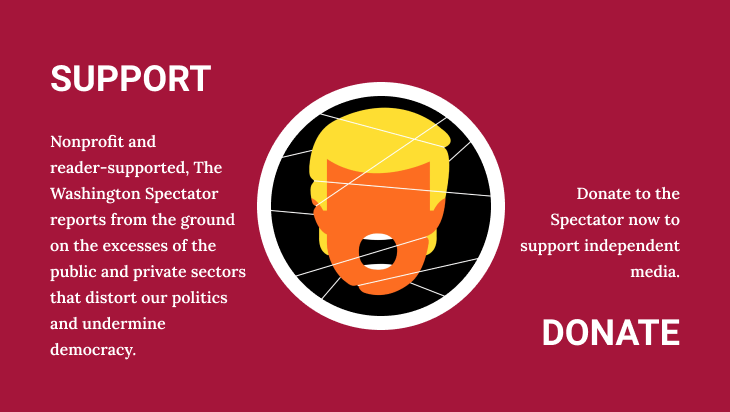“What made you interested in peace?” students often ask. The answer is unexpected: “I was drafted for the Vietnam War.” It was 1968, an unfortunate time to be an available young man in America. The war was raging, and draft calls were peaking. My turn came that summer when I was ordered to report for my military draft physical. To avoid being assigned to the infantry, I volunteered for the army band, hoping to skate by and keep my head down.
But my conscience wouldn’t allow it. When I arrived at my first duty assignment, Fort Wadsworth, New York, I talked with vets returning from the war. As I learned of the atrocities inflicted upon Vietnam, I was shocked and horrified. I could not remain silent about a war that was so cruel and unjust. I had to speak out, so I joined the GI movement, organizing protests, signing anti-war petitions, and circulating underground newspapers in the barracks. Uncle Sam turned me into a peace activist. In New York one day, I attended an anti-war meeting that included soldiers from other bases in the region. We organized a committee of GIs to participate in an anti-war march planned for April 1969. Civilian organizers were welcoming and invited us to march at the front of the rally, wearing white paper caps reading “GIs for Peace.” The growing presence of soldiers and Vietnam veterans gave credibility to the anti-war movement. If even those who served in the war were demanding peace, we hoped, politicians would take notice.
During that year, I also helped to circulate a petition that was signed by 1,365 active-duty service members from bases all over the world, including more than 40 soldiers from my unit. The petition appeared as a full-page ad in The New York Times in November 1969, the week before the Washington Mobilization, which was attended by hundreds of thousands of protesters. I was part of a delegation of hundreds of active-duty troops who led the march.
Like many who were active in the peace movement then, I wondered if our actions were having any effect. As protests increased in 1969, Richard Nixon said, “Under no circumstances will I be affected whatever” by anti-war protest. We subsequently learned, however, that our protests had significant impacts in helping to end the war. As award-winning historian Carolyn Eisenberg concluded, “Waves of mass demonstrations, accompanied by growing resistance inside the military, ongoing electoral activity, and lobbying efforts on Capitol Hill imposed significant constraints on presidential decision making.”
In this essay, I examine some of the specific impacts of anti-war activism. I identify factors of success, as well as approaches that had negative effects. Along the way, I offer observations for today’s anti-Trump resistance movement.
Numbers
Analysts agree that mass participation is crucial to the effectiveness of civil resistance. Mass rallies attract media attention and place issues and demands on the public agenda. They give visibility and voice to underrepresented communities. With sufficient scale, they establish the critical mass that is necessary to exert political clout. Mass rallies attract media attention and place issues and demands on the public agenda.
Large demonstrations occurred frequently during the Vietnam War, with as many as a dozen events attracting crowds of more than 100,000 people. The constant demonstrations were a means of keeping pressure on decision-makers in Washington. The focus on repetitive mass rallies was tactically stagnant, however, and distracted attention from other forms of action, such as media communications and legislative lobbying.
The current anti-Trump resistance certainly meets the standard of mass participation. The movement scored a huge success with the Hands Off rallies of April 5, when an estimated three million people protested in 1,400 localities. The challenge now is maintaining momentum for the movement. As organizers plan next steps in building the resistance, they may wish to consider the experience of the Vietnam Moratorium.
The Moratorium
The Moratorium was a call for people in all walks of life to pause business as usual in their schools or workplaces on October 15, 1969, and take action for peace. It encouraged messages and actions that would appeal to mainstream audiences and reflect the values of people in their local communities.
The idea caught on like wildfire and gained the endorsement of many prominent individuals and national organizations and more than 60 members of Congress. An estimated two million Americans took part in local activities that day, ranging from a gathering of 100,000 people on the Boston Common to rallies and prayer vigils in hundreds of cities and towns. Across the country, many middle-class people participated in peace action for the first time.
The Moratorium events received prominent, highly favorable press coverage, a first for the Vietnam movement. CBS and NBC broadcast 90-minute prime-time news specials on the actions that evening. Time and Newsweek produced front-page stories, as did many national and local newspapers.
The Moratorium events and the rising tide of protest had a significant impact on policy, although we didn’t know it at the time. The Nixon administration had issued a secret ultimatum to Hanoi to accept U.S. peace terms or face a huge escalation of military pressure, including nuclear threats. The White House was deeply concerned about rising anti-war ferment, however, and feared the prospect of even larger demonstrations if the war escalated. Nixon had to back down from his threat and later admitted in his memoir that anti-war protests undermined his ultimatum to Hanoi.
Images
Despite the success of the Moratorium, the media image of the anti-war movement worsened over the years. “As the war steadily lost popularity in the late 60s,” Todd Gitlin observed, “so did the antiwar movement.” Nixon called student activists “bums” and often disparaged protesters. The major anti-war coalitions did little to respond to these slurs. They had minimal communications capacity and lacked a coherent strategy for conveying positive images and messages that could attract broader social support.
The negative images of the anti-war movement were partly self-inflicted. As the war dragged on, some frustrated radicals resorted to violence. In 1969, the Weather Underground Organization sponsored rioting, vandalism, and attacks against the police in the so-called Days of Rage in Chicago. The group also committed terrorist bombings of banks and government buildings.
Political violence is always harmful in peace and justice movements. It drives away potential supporters and reinforces negative claims of anarchy in the streets. Nonviolent action, by contrast, is welcoming to all and conveys a positive and inviting image. A disciplined commitment to nonviolence is crucial to the success of social action.
Most activists today have learned that lesson. The Hands Off protests were overwhelmingly peaceful, with very low levels of violence or intentional property damage. The events were family-friendly and exuded positive energy and hopefulness. Maintaining that nonviolent demeanor will be crucial to the movement’s success.
Leveraging politics
The anti-war movement focused more on organizing street protests rather than campaigning in elections or lobbying Congress. Some sectarian groups were opposed to institutional politics on principle and seemed more interested in overthrowing the state than working within it for policy change. Still, many activists were more pragmatic. They utilized institutional politics to force the resignation of President Lyndon Johnson in 1968 and to lobby Congress to halt further funding for the war in the 1970s.
In 1967, Americans for Democratic Action launched an audacious campaign to unseat the war-making president. They recruited thousands of student volunteers to support Minnesota Senator Eugene McCarthy as an anti-war candidate in the New Hampshire primary in 1968. When the ballots were tallied, in March 1968, the little-known challenger polled a remarkable 42 percent of the vote, compared to 49.5 percent for Johnson, who was a write-in candidate. McCarthy lost the vote count but won what historian Charles DeBenedetti termed “an astonishing psychological victory” that stunned Johnson and the political establishment in Washington. A few days later, Senator Robert Kennedy entered the Democratic primaries, delivering a further blow to Johnson’s reelection prospects.
Reeling from the mounting electoral challenge and military reversals in Vietnam, Johnson announced on March 31 that he would not seek reelection. He ordered a bombing halt and the beginning of negotiations to end the war. He also rejected the military’s request for 206,000 additional troops in Vietnam. This was a major turning point in the direction of U.S. policy, ending the buildup of troops and opening the door to the possibility of a diplomatic solution.
Grassroots lobbying
In 1970, Tom Hayden, Jane Fonda, and other activists created the Indochina Peace Campaign and related groups to demand that Congress use its power of the purse to cut off funding for continued military operations. The emphasis was on grassroots education and mobilizing local constituents to apply pressure on their congressional representatives. These efforts paid off dramatically in June 1973, when Congress approved landmark legislation terminating all U.S. military activity “in or over or off the shores” of Indochina.
The next step for the campaign was to defeat White House requests for billions of dollars of military aid for the Saigon and Phnom Penh regimes to continue the fighting. In early 1975, thousands of activists gathered in Washington for an anti-war assembly to block the requests. In March, Congress rejected any further aid, sealing the fate of the two governments.
Graham Martin, the last U.S. ambassador in Saigon, attributed Congress’s action to a “beautifully orchestrated” lobbying effort by the anti-war campaign. As he later testified in Congress: “These individuals deserve enormous credit for a very effective performance.” It was “the constancy of the drumming in day after day” and “the building of the pressure from the constituencies.” Legislative engagement rooted in grassroots mobilization finally ended the fighting.
Today, with Republicans controlling both houses of Congress, the near-term prospects for lobbying in Washington are minimal. Activists will be more effective if they concentrate on educational efforts and activist mobilization in local districts. Grassroots network building and local organizing campaigns can generate constituent pressure on members of Congress. They can also lay the foundation for electoral and legislative action in the months ahead.
The anti-war movement ended the war through a constant drumbeat of protest in the streets and the effective use of electoral and legislative levers of power. The same will be necessary now to stop the Trump-Musk wrecking machine and save American democracy.
David Cortright is a scholar and activist for peace. A professor emeritus of the University of Notre Dame’s Kroc Institute for International Peace Studies, he is currently a visiting scholar at Cornell University. Cortright is the author or editor of 22 books and has written hundreds of articles and reports on peace policy and activism.
As an enlisted soldier in the U.S. Army from 1968 to 1971, Cortright spoke out against the Vietnam War as part of the GI peace movement. In 1970, he filed a federal lawsuit, Cortright v. Resor, to defend the right of soldiers to dissent against unjust war.
From 1978 through 1988, he was the executive director of SANE, the Committee for a Sane Nuclear Policy, and a leader of the Nuclear Weapons Freeze Campaign. In 2002, he was a co-founder of Win Without War, which opposed the U.S. invasion of Iraq and remains an active voice today in promoting progressive foreign policy issues.
Cortright has written widely on nonviolent social change, soldier dissent, nuclear disarmament, and the use of multilateral sanctions and incentives as tools of international peacemaking.



0 Comments